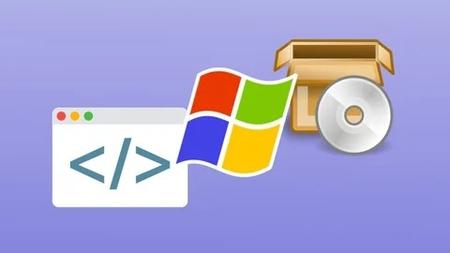English | MP4 | AVC 1280×720 | AAC 44KHz 2ch | 40 lectures (4h 4m) | 2.43 GB
Reverse engineer Windows Graphical User Interface programs with xdbg
In the first course in this series entitled Reverse Engineering 1: x64dbg Debugger for Beginners, you learnt how to reverse engineer a command line program and learnt how to debug and step over and patch and much more. Now, in this 2nd course, you will continue learning. This time we will be learning how to reverse engineer graphical user interface programs. As usual, we will work with crackme’s that I have written for you to practice reversing.
What you will learn:
- How to disassemble programs into assembly code
- Dynamic Analysis
- Setting breakpoints and stepping through code
- Modify program behaviour
- Patching programs
- Intermodular Call Method
- Call Stack Method
- Hardware Breakpoints
- Memory Patching
- Patching EAX register values
- Understanding Trial Period software
- Understanding Software Registration process
Table of Contents
Introduction
1 Introduction
Introduction to windows gui programs
2 Introduction to windows gui programs
Analyzing PE files
3 Analyzing PE files
Setting up x64dbg
4 Setting up x64dbg
Setting breakpoints on strings
5 Setting breakpoints on strings
Windows API functions
6 Windows API functions
Pushing parameters to the stack
7 Pushing parameters to the stack
Bypassing messages
8 Bypassing messages
Bypassing using xor assembly
9 Bypassing using xor assembly
Breakpoints on Intermodular Calls
10 Breakpoints on Intermodular Calls
Breakpoints from Call Stack
11 Breakpoints from Call Stack
Registration file checks
12 Registration file checks
Analyzing crackme 2
13 Analyzing crackme 2
Registration checks
14 Registration checks
Software registration
15 Software registration
Removing Nag screens
16 Removing Nag screens
Analyzing crackme 3
17 Analyzing crackme 3
Removing Nag screen 1
18 Removing Nag screen 1
Removing Nag screen 2
19 Removing Nag screen 2
Setting Registration Status
20 Setting Registration Status
Trial Periods
21 Trial Periods
Analyzing Trial Periods
22 Analyzing Trial Periods
Extending Trial Periods
23 extending-beyond-30-days
24 Extending Trial Periods
Autogenerated serial keys
25 Autogenerated serial keys
Autogenerated serial keys 2
26 Autogenerated serial keys 2
Practical Exercise – TDC
27 Practical Exercise – TDC
28 Practical Exercise – TDC – part 2
29 Practical Exercise – TDC – part 3
Patching EAX register values
30 patching-eax-register-values
31 Patching EAX register values
32 Patching EAX register values – part 2
Hardware Breakpoints
33 Hardware Breakpoints
34 Hardware Breakpoints – part 2
Memory Patching
35 Memory Patching
36 Memory Patching – part 2
xAnalyzer
37 xAnalyzer
38 Configuring xAnalyzer
Serial Phishing
39 Intro to Serial Phishing
40 Analyzing the CreateFile API function
41 Serial Phising
Resources for Further Study
42 Bonus Lecture
Resolve the captcha to access the links!
